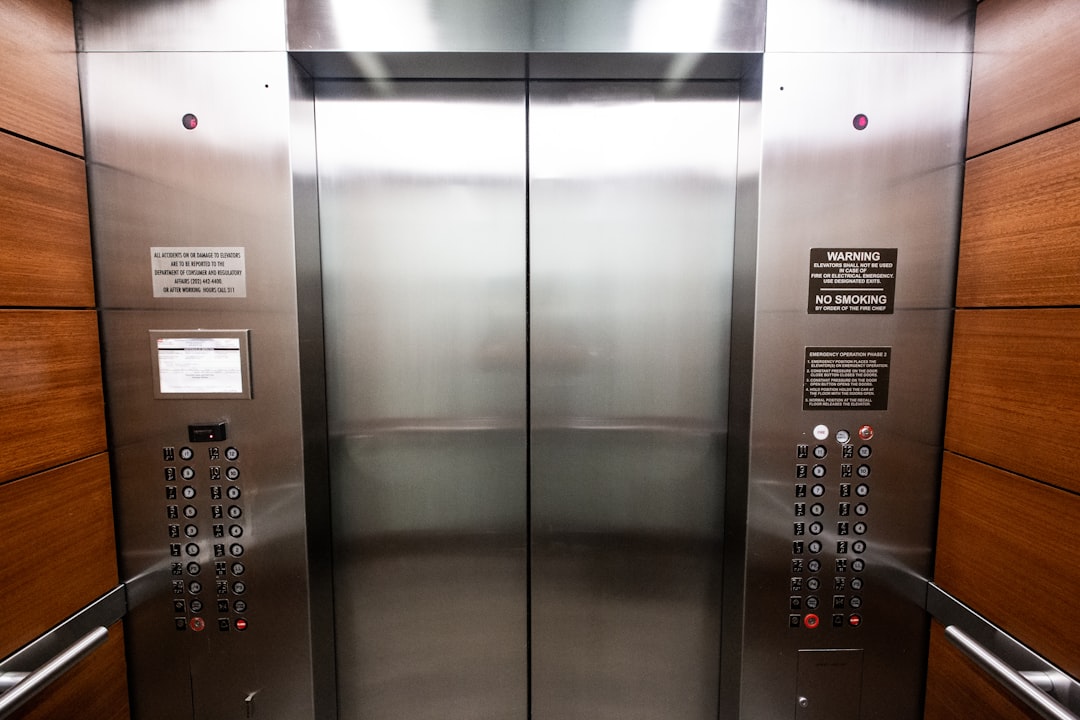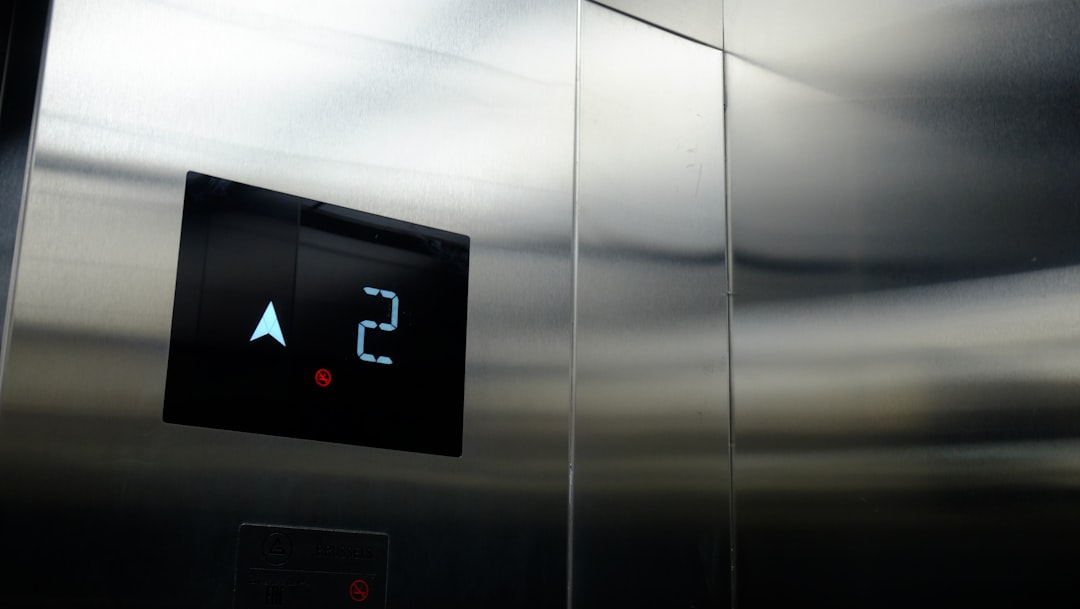
Supercharge your lead generation with a FREE Google Ads audit - no strings attached! See how you can generate more and higher quality leads
Get My Free Google Ads AuditFree consultation

No commitment
Supercharge your lead generation with a FREE LinkedIn Ads audit - no strings attached! See how you can generate more and higher quality leads
Get My Free Google Ads AuditFree consultation

No commitment
Supercharge your lead generation with a FREE Meta Ads audit - no strings attached! See how you can generate more and higher quality leads
Get My Free Google Ads AuditGet My Free LinkedIn Ads AuditGet My Free Meta Ads AuditFree consultation

No commitment
Supercharge your lead generation with a FREE Google Ads audit - no strings attached! See how you can generate more and higher quality leads
Get My Free Google Ads AuditFree consultation

No commitment
In the competitive world of home elevator installation, capturing the right audience's attention at the optimal time is crucial. Google Ads offers a strategic advantage by intercepting potential clients precisely when they are searching for specialized services. While social media and email marketing play pivotal roles in brand building and relationship nurturing, Google Ads fills the critical gap by driving immediate, qualified leads to your business. Integrating Google Ads into your marketing plan can elevate both online and offline efforts, ensuring you connect with decision-makers at the moment they're ready to engage. For home elevator installers, this means transforming searches into substantial sales opportunities through precision targeting, comprehensive ROI measurement, and seamless cross-channel integration.

Home elevator installers operate in a high-value, niche market where every qualified lead can represent substantial revenue. Capturing these leads efficiently requires a blend of data-driven targeting, message personalization, and continuous optimization informed by actionable insights.
A well-orchestrated Google Ads strategy begins with a granular understanding of your ideal customer profile and the buyer journey unique to home elevator installations. By using advanced analytics and intent data, marketers can identify in-market homeowners and decision-makers, moving beyond traditional guesswork to target high-converting opportunities in real time.
Whether managing campaigns in-house or partnering with an agency, home elevator installers can unlock sustainable business growth by operationalizing these best practices. If you want to see how these strategies can be put into action, get started for free with Sona to streamline your lead generation and campaign optimization. The following sections deliver a step-by-step playbook for driving consistent, high-quality leads through Google Ads for Home Elevator Installers, with practical tactics that scale as the business matures.

Home elevator installers operate in a highly specialized market where precision targeting and timely engagement make a measurable difference in lead quality and revenue growth. Google Ads provides a direct path to connect with homeowners and commercial property managers seeking custom elevator solutions, ensuring that marketing budgets are allocated to high-intent opportunities.
Ready to unlock more qualified leads and measure true marketing impact? Get started for free with Sona.

Google Ads for Home Elevator Installers provides a multi-faceted digital marketing approach that matches the complexity of the residential elevator buying journey. By strategically leveraging different campaign formats, installation companies can capture demand at every stage, from initial research to final purchase decision. Each campaign type serves a distinct role in building awareness, driving engagement, and ultimately generating high-quality leads for sustained business growth. For a deeper dive into digital marketing strategies tailored for residential elevator businesses, review this guide to home elevator marketing.
Each Google Ads campaign type plays a strategic role in the marketing funnel for home elevator installers. When these campaigns are unified and enhanced by real-time account data, intent signals, and dynamic audience management, businesses can achieve more measurable, scalable, and profitable growth. To see how you can put these strategies into practice, get started for free with Sona today.

Expanding growth opportunities for home elevator installers requires a precise, data-driven approach that looks beyond standard paid search tactics. Teams that leverage intent signals and accurate segmentation consistently capture higher-value leads and avoid wasted spend on low-potential audiences.
This unified, multi-channel approach allows home elevator installers to identify, reach, and convert the audiences that matter most. By combining granular keyword targeting, real-time intent monitoring, and enhanced audience management, teams ensure that every marketing dollar is invested in driving measurable business growth. If you’re ready to see growth opportunities in action, get started for free with Sona.

Audience segmentation elevates the relevance and profitability of your marketing strategy in the home elevator industry. By structuring campaigns around distinct audience types, installers can ensure every advertising dollar aligns with the needs and purchase signals of their highest value prospects. For a deeper dive into building audience segments that drive pipeline, explore this guide to account identification.
Ready to put these segmentation strategies into action and maximize your campaign ROI? Get started for free with Sona.

| Industry | Keyword | Monthly Search Volume | Competition Level | Low Bid | High Bid |
| Home Elevator Installers | residential elevator installers near me | 140 | LOW | 4.35 | 14.04 |
| Home Elevator Installers | home elevator installation near me | 210 | MEDIUM | 2.45 | 13.65 |
| Home Elevator Installers | residential elevator installation | 260 | LOW | 2.67 | 10.96 |
| Home Elevator Installers | home elevator installers | 1000 | LOW | 2.14 | 8.3 |
| Home Elevator Installers | in home elevator installation | 1000 | LOW | 2.14 | 8.3 |
| Home Elevator Installers | elevator installation cost | 1600 | LOW | 1.51 | 5.68 |
| Home Elevator Installers | cost to install elevator in home | 1600 | LOW | 1.1 | 3.76 |
Effective keyword strategy is the foundation for profitable Google Ads campaigns in the home elevator installation space. By focusing on intent-rich, industry-specific terms, marketers can align their paid search investments with the segments most likely to convert, driving qualified leads and greater efficiency with every dollar spent. For a deeper dive into aligning your keyword approach with broader demand generation, browse our blog articles.
Achieving predictable growth in the home elevator installation sector requires a disciplined approach to campaign architecture. Each execution step, from keyword curation to ongoing optimization, must be meticulously aligned with the unique buyer journey and technical complexity that defines this market. By focusing on data-driven processes, marketers can transform raw search demand into sales-ready opportunities while maintaining efficiency and scalability.
A unified strategy connects granular targeting, tailored messaging, and conversion-centric user experiences. When every campaign touchpoint is informed by real-time behavioral signals and enriched account profiles, teams gain the agility to prioritize high-value prospects and reduce wasted spend. This framework outlines how advanced Google Ads for Home Elevator Installers, when seamlessly integrated with modern revenue platforms, deliver actionable insights that drive business growth and measurable ROI.
By integrating advanced visitor identification, marketers can move beyond anonymous traffic and pinpoint the companies and individuals engaging with these keywords. This enables dynamic audience creation—ensuring campaigns are only reaching those most aligned with the business’s service offering and ideal customer profile.
Real-time intent data lets teams rapidly update messaging to reflect shifting market dynamics or competitive offers. By syncing creative with account-level activity and funnel stage, marketers can personalize ad copy for each audience segment, increasing relevance and driving higher click-through and conversion rates. For more PPC copywriting best practices, explore this actionable PPC tips guide.
With advanced platform integrations, landing pages can adapt content dynamically based on the originating keyword or visitor profile. This personalization keeps conversion rates high as user journeys become more complex and data-driven, and enables seamless syncing of captured leads with sales systems for immediate follow-up. To maximize conversion, consider these digital marketing solutions for residential elevator businesses.
Synchronized CRM and ad platform data ensures that audience segments and lead statuses are always current. As leads progress or convert, dynamic audiences automatically update, while conversion tracking captures both online and offline actions. This ecosystem gives marketers unparalleled visibility into which campaigns, keywords, and creative are driving true business outcomes—fueling smarter decisions and scalable growth for home elevator installers. If you’re ready to streamline your marketing data and accelerate results, get started for free with Sona.
In navigating the intricate world of Google Ads for home elevator installers, it's crucial to harness strategies that are not only effective but also tailored to the unique needs of your industry. By understanding the nuances of targeting, keyword optimization, and ad management, you can create campaigns that truly resonate with your audience and drive meaningful engagement.
Throughout this article, we've explored the challenges faced by home elevator installers in the digital advertising space. From selecting the right keywords to crafting compelling ad copy and optimizing your budget, each step is pivotal in reaching potential customers. By adopting these insights, you can transform your advertising efforts into a powerful lead-generating machine, boosting your brand's presence and customer base.
Imagine a future where your Google Ads campaigns consistently deliver high-quality leads, enhancing your business's growth trajectory. This transformation is within reach, and it starts with implementing the strategies discussed here. Embrace the potential of digital advertising to elevate your business to new heights, and let these insights guide you on your journey.
To truly experience the power of these strategies and streamline your approach, consider exploring a platform that unifies your go-to-market data and provides actionable insights. Start for free
Best practices include using data-driven targeting, message personalization, and continuous optimization informed by actionable insights. It is important to leverage unified data sources to uncover patterns in search behavior, seasonality, and regional demand, and to ensure seamless cross-channel integration for a cohesive marketing strategy.
Optimize your Google Ads by identifying high-impact keywords, aligning landing pages and creative to optimize conversion rates, and implementing performance optimization tactics using insights from predictive models. It is also crucial to integrate Google Ads data with CRM and marketing automation platforms.
The article does not specify an exact budget, but emphasizes the importance of allocating budgets to high-intent opportunities and using advanced analytics to identify high-converting opportunities, ensuring that marketing dollars are spent efficiently.
Target high-intent keywords such as 'home elevator installation,' 'residential elevator company,' and 'custom elevator for homes.' Complement these with long-tail and location-specific phrases for better targeting and conversion rates.
Measure success by tracking every touchpoint from click to conversion, including offline actions. Use Google Ads analytics paired with advanced attribution tools to obtain a full-funnel view of ad effectiveness, enabling smarter reallocation of budget to top-performing segments and campaigns.
Join results-focused teams combining Sona Platform automation with advanced Google Ads strategies to scale lead generation

Connect your existing CRM

Free Account Enrichment

No setup fees
No commitment required

Free consultation

Get a custom Google Ads roadmap for your business
Join results-focused teams combining Sona Platform automation with advanced Meta Ads strategies to scale lead generation

Connect your existing CRM

Free Account Enrichment

No setup fees
No commitment required

Free consultation

Get a custom Google Ads roadmap for your business
Join results-focused teams combining Sona Platform automation with advanced LinkedIn Ads strategies to scale lead generation

Connect your existing CRM

Free Account Enrichment

No setup fees
No commitment required

Free consultation

Get a custom Google Ads roadmap for your business
Join results-focused teams using Sona Platform automation to activate unified sales and marketing data, maximize ROI on marketing investments, and drive measurable growth

Connect your existing CRM

Free Account Enrichment

No setup fees
No commitment required

Free consultation

Get a custom Google Ads roadmap for your business
Over 500+ auto detailing businesses trust our platform to grow their revenue
Join results-focused teams using Sona Platform automation to activate unified sales and marketing data, maximize ROI on marketing investments, and drive measurable growth

Connect your existing CRM

Free Account Enrichment

No setup fees
No commitment required

Free consultation

Get a custom Google Ads roadmap for your business
Over 500+ auto detailing businesses trust our platform to grow their revenue
Join results-focused teams using Sona Platform automation to activate unified sales and marketing data, maximize ROI on marketing investments, and drive measurable growth

Connect your existing CRM

Free Account Enrichment

No setup fees
No commitment required

Free consultation

Get a custom Google Ads roadmap for your business
Over 500+ auto detailing businesses trust our platform to grow their revenue
Our team of experts can implement your Google Ads campaigns, then show you how Sona helps you manage exceptional campaign performance and sales.
Schedule your FREE 15-minute strategy sessionOur team of experts can implement your Meta Ads campaigns, then show you how Sona helps you manage exceptional campaign performance and sales.
Schedule your FREE 15-minute strategy sessionOur team of experts can implement your LinkedIn Ads campaigns, then show you how Sona helps you manage exceptional campaign performance and sales.
Schedule your FREE 15-minute strategy sessionOur team of experts can help improve your demand generation strategy, and can show you how advanced attribution and data activation can help you realize more opportunities and improve sales performance.
Schedule your FREE 30-minute strategy sessionOur team of experts can help improve your demand generation strategy, and can show you how advanced attribution and data activation can help you realize more opportunities and improve sales performance.
Schedule your FREE 30-minute strategy sessionOur team of experts can help improve your demand generation strategy, and can show you how advanced attribution and data activation can help you realize more opportunities and improve sales performance.
Schedule your FREE 30-minute strategy sessionOur team of experts can help improve your demand generation strategy, and can show you how advanced attribution and data activation can help you realize more opportunities and improve sales performance.
Schedule your FREE 30-minute strategy session





Launch campaigns that generate qualified leads in 30 days or less.
